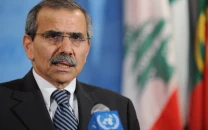Using night lights for data can have its difficulties. Researchers must account for the phases of the moon that varies the amount of light on earth. Aerosols, water vapour, extraneous light and ozone can cause atmospheric effects.
Over 25m people apply for 1.3m railway vacancies in India
New sensors on satellites, however, have afforded richer spatial details, detecting dim lighting and lit roads. Scientists have been developing updated software to capture clearer, accurate images that are more readily available.
Researchers have tracked urban expansion and land-use changes through night lights over time. Light intensity has been used to estimate use of energy, night lights to track conditions in conflict-affected areas and to help with disaster response.
It has been used to record, study and explain, among other things, fluctuations in infectious diseases, mapped carbon emissions and light pollution.
Bhartendu Pandey of Yale University said,"In other words, night lights observed from more than 800km above the surface of the earth tell us a story about human activities and dynamism that no other data source does."
This article originally appeared in BBC News





















COMMENTS
Comments are moderated and generally will be posted if they are on-topic and not abusive.
For more information, please see our Comments FAQ